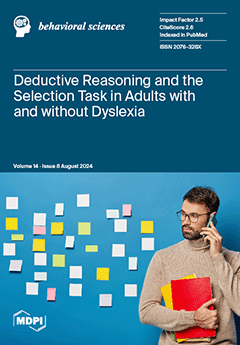Open AccessReview
Systematic Review on the Impact of Various Types of Universal Basic Income on Mental Health in Low- and Middle-Income Countries
by
Simona Gomboc, Matija Zagoranski, Anaja Kos, Tinkara Bolta, Teodora Kitanovska, Gaja Rupena, Lara Slabanja, Julija Soklič, Lara Ružič Povirk, Lina Šenica, Elara Udvanc, Tija Vrhovnik, Matej Kržišnik and Vesna Jug
Viewed by 727
Abstract
In the past two decades, a significant surge in interest in investigating mental disorders and challenges faced by low- and middle-income countries in the realm of mental health has been observed. Various types of universal basic income (UBI) programs have already demonstrated significant
[...] Read more.
In the past two decades, a significant surge in interest in investigating mental disorders and challenges faced by low- and middle-income countries in the realm of mental health has been observed. Various types of universal basic income (UBI) programs have already demonstrated significant impacts on individuals’ mental health in high-income countries. Therefore, this review focuses on the situation in low- and middle-income countries. A literature review was conducted using seven electronic databases. Empirical studies of any design that implemented different types of UBI interventions in middle- and low-income countries and applied any type of mental health measures were searched for. After systematically reviewing 6822 articles, 13 empirical studies examining the relationship between various types of UBI interventions and different aspects of mental health in developing countries were identified. The collective findings of the studies suggest that UBI programs have significant positive effects on the mental health of individuals from developing countries, with the potential mediating role of unconditionality and payment frequency being noteworthy. However, these implications are limited due to the small number of studies conducted in this area and their methodological constraints. Further research with rigorous design is needed, particularly focusing on experimental control and length of follow-up periods.
Full article
►▼
Show Figures


